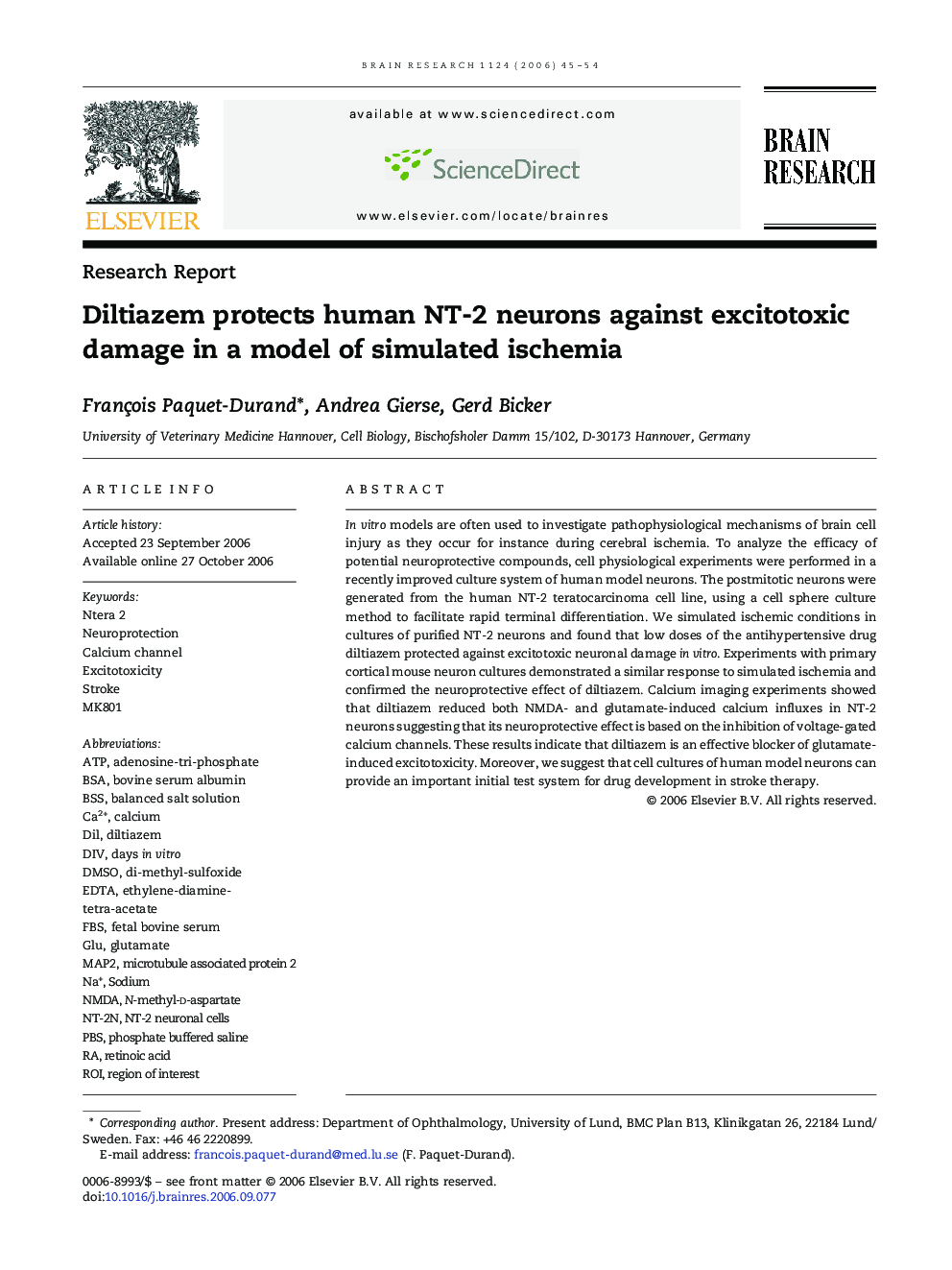| Article ID | Journal | Published Year | Pages | File Type |
|---|---|---|---|---|
| 4331939 | Brain Research | 2006 | 10 Pages |
In vitro models are often used to investigate pathophysiological mechanisms of brain cell injury as they occur for instance during cerebral ischemia. To analyze the efficacy of potential neuroprotective compounds, cell physiological experiments were performed in a recently improved culture system of human model neurons. The postmitotic neurons were generated from the human NT-2 teratocarcinoma cell line, using a cell sphere culture method to facilitate rapid terminal differentiation. We simulated ischemic conditions in cultures of purified NT-2 neurons and found that low doses of the antihypertensive drug diltiazem protected against excitotoxic neuronal damage in vitro.Experiments with primary cortical mouse neuron cultures demonstrated a similar response to simulated ischemia and confirmed the neuroprotective effect of diltiazem. Calcium imaging experiments showed that diltiazem reduced both NMDA- and glutamate-induced calcium influxes in NT-2 neurons suggesting that its neuroprotective effect is based on the inhibition of voltage-gated calcium channels. These results indicate that diltiazem is an effective blocker of glutamate-induced excitotoxicity. Moreover, we suggest that cell cultures of human model neurons can provide an important initial test system for drug development in stroke therapy.
